Prototyping the Future of the Office: A Look Inside NI’s Workplace Pilot Program
April 10, 2023
In 2019, NI (formerly National Instruments) engaged Gensler to help them develop a workplace strategy for their headquarters in Austin. Then the pandemic hit, and the idea of work and the workplace was turned on its head. As it happened, NI was also in the midst of a rebrand, so it was good timing to rethink the identity of their office space. Over the next two years, NI began working with Gensler to develop a workplace pilot program that could adapt to new ways of working. As a test and measurement company, it made sense for NI to “tinker” with the pilot space, receiving feedback from users and adjusting as needed. More than 600 people (about a third of NI’s staff) participated in the pilot, providing valuable, real-time feedback that would help inform a larger campus-wide renovation.
Here, Kelly Moore, regional practice area co-leader for Strategy, Gensler Dallas, sat down with Scott Strzinek, senior director of global facilities for NI, to talk about Gensler’s ongoing strategy work and partnership with NI to develop the workplace pilot program — and what it means for the future.
Kelly Moore: How did this project with NI and Gensler begin? What prompted NI to seek out a change in the workplace even before the pandemic?
Scott Strzinek: When I interviewed at NI seven and a half years ago, I delivered a presentation on “workplace transformation.” I feel like that topic is what got me hired. Then, in 2019, NI brought on a new CEO, and he was very keen on upgrading the workspace, so he effectively approved the engagement with Gensler.
After COVID hit, we pivoted to a workplace strategy conversation, and your team led us through this journey of discovering who we are, how we work, and how we wanted to work in the future. It revealed a distance between how we work today and how we expect to work in the future. There was clearly a demand for change. We needed a space that could enable that change.
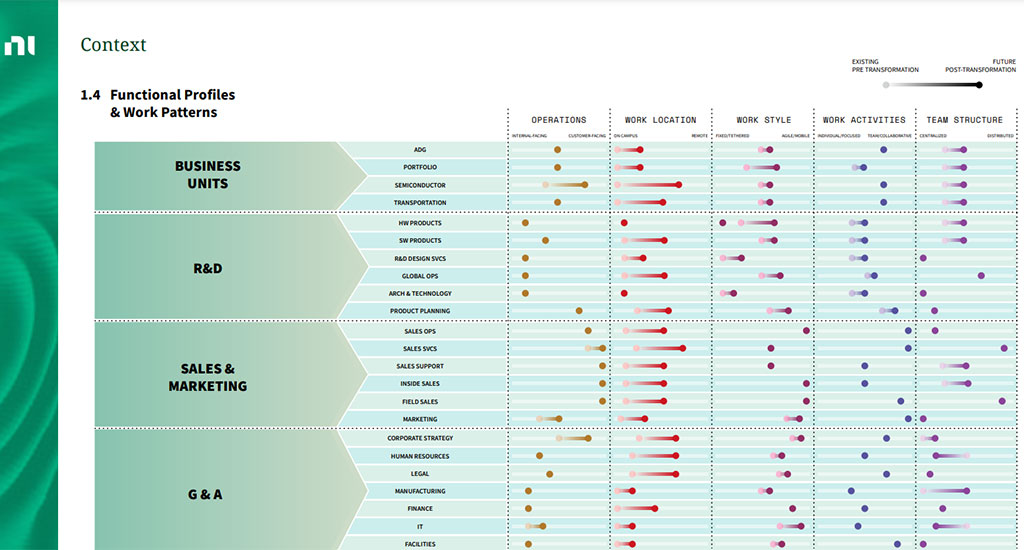
KM: Because of the pandemic, when we started that work with you and your team, I don’t think we knew what the journey was going to be.
SS: Yeah, and we threw in another change during the pandemic, which was a rebranding. We went from National Instruments to NI, and our brand, values, and identity changed. That really gave us permission to go big, to be bold. We ended up with a couple of guiding principles that enabled us to be anchored to who we are, but then really redefine what the look and feel of our offices would be. That was a great opportunity.
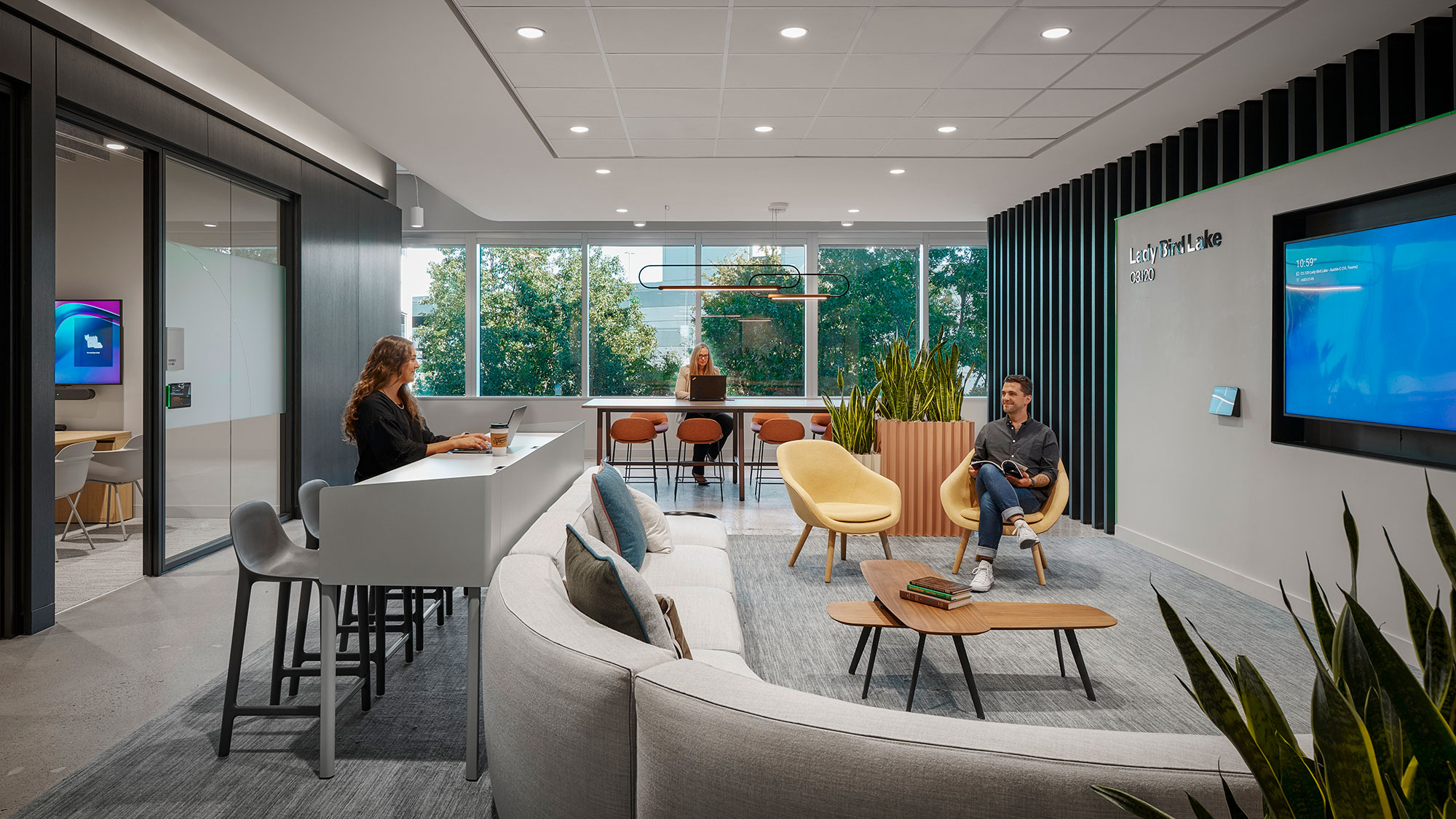
KM: As we were discussing ideas stemming from the strategy sessions in 2020, what was your initial reaction to the idea of pilot programs?
SS: It resonated with me immediately because we are in the test and measurement industry within the tech space. The idea of piloting something — trying something, seeing if it works, and iterating on it — that’s part of our DNA. That’s how we develop products, and how we continue to evolve.
From the perspective of developing space, piloting is pretty unique. What I love about the pilot concept is that the whole purpose of it is to learn and to give feedback. With a pilot, every piece of feedback means the next big investment is going to be better and better. It really reduces the risk of big campus renovations. The work we did together was a relatively small investment to ensure that we got the big investment right.
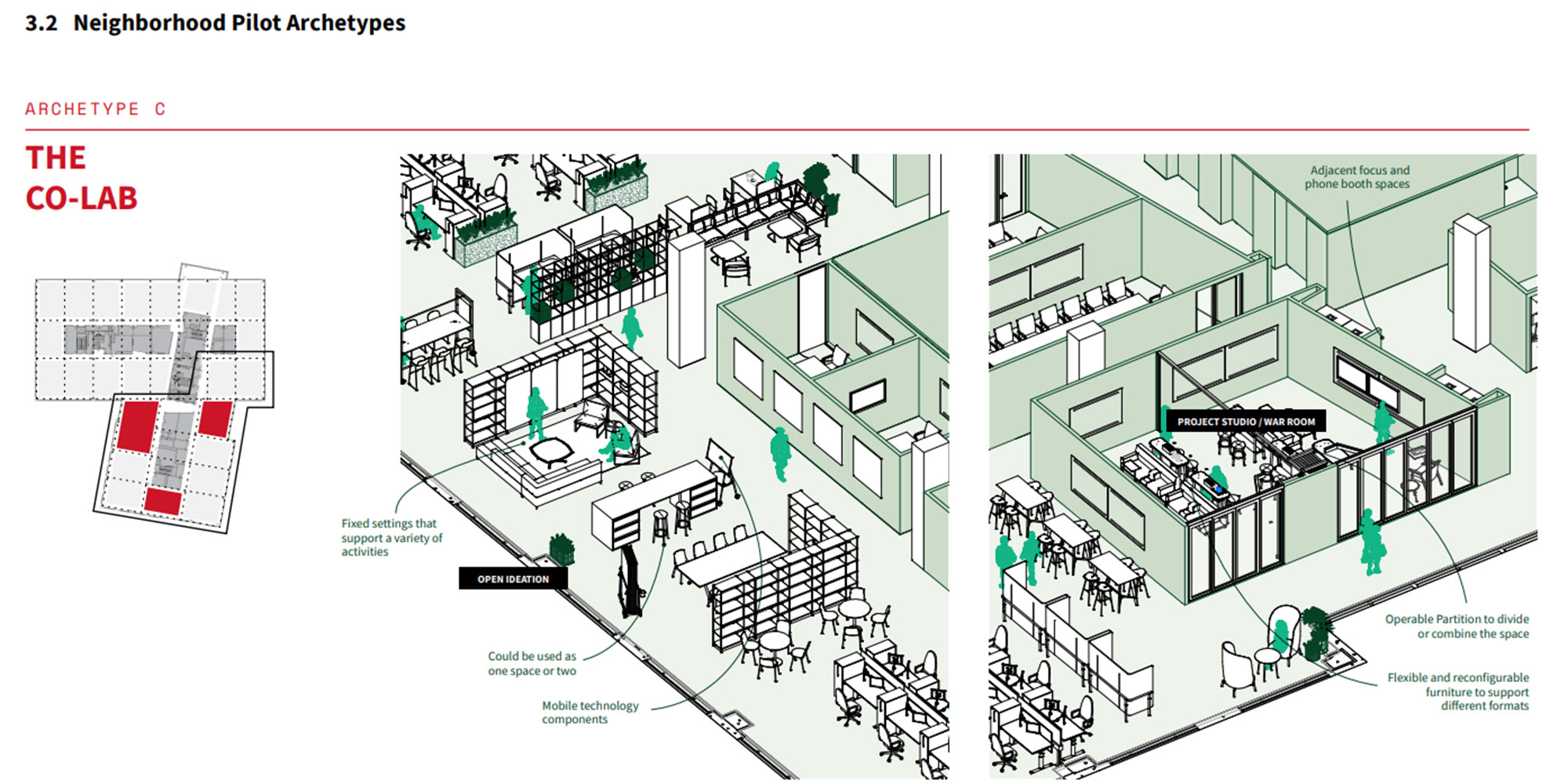
KM: When we put the pilot strategy together, we were very purposeful about how we messaged the intent, goals, and the purpose because we needed the pilot users to come on that journey with us. Did the users embrace that communication?
SS: They totally did. And I attribute that to how frequently and how effectively we let them know that this was a pilot and that the purpose was to gather feedback. We didn’t want them to just do a drive by of the space, but we wanted them to actually be a resident in it, to work in it, and to really feel it, and then give us feedback along the way.
From the moment the elevator doors open, we had a sandwich board that said, “Welcome to our pilot space.” We described what the purpose of it was. Then we had feedback elements all over the place. We were trying to really be authentic to who we were as a company by using the same language that we use when we’re developing products.
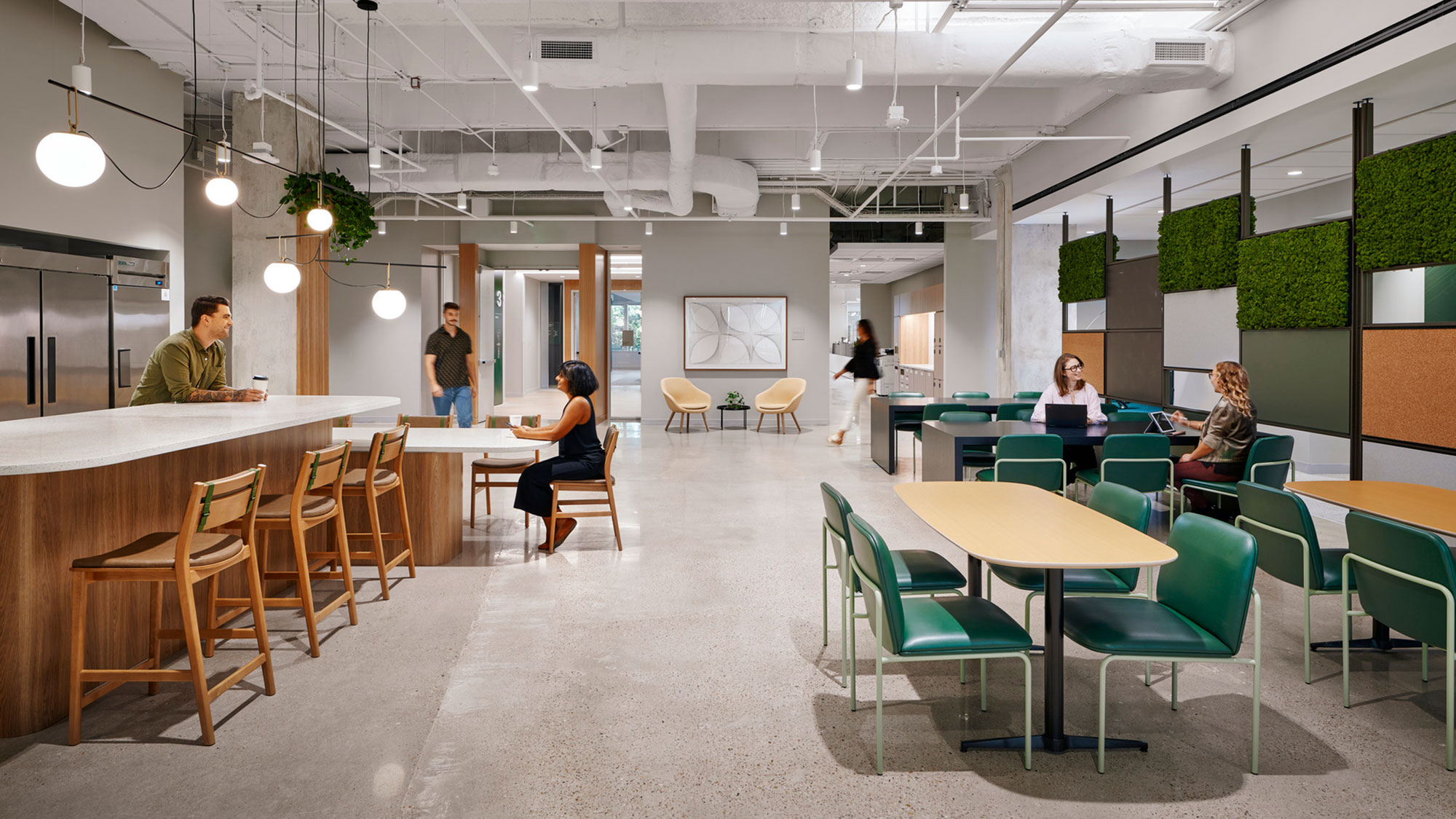
KM: Did it take long for people to give their feedback, or did they start to do it right away?
SS: It was pretty immediate — mostly because we made it so easy to give feedback. We made these little blue note cards that we put on desks, pedestals, and furniture — we put them in every single room — and they had a QR code that linked to a survey that was about that specific element to give us feedback on everything from the lighting to the acoustics, airflow, privacy, and natural light. We had 75 different surveys about different elements throughout the space.
KM: What was the feedback like? I know that one team said they were more productive within three weeks in the pilot than in six months of being together previously. Did you engage that team to understand what it was about the space that helped them be more productive?
SS: The pilot helped us understand how we work and what kind of spaces we need to enable that work. Our traditional model was basically a bunch of (mostly oversized) conference rooms. With the pilot, we moved to smaller rooms with great technology. We’re a multinational company, so being able to quickly and easily connect with colleagues all over the world is super important. Prior to the pilot, we would spend the first 10 minutes of every meeting trying to figure out how to get a decent connection. Now we have easy one-touch technology.
We also had spaces that had no technology in them, so if you wanted to have a one-on-one meeting, you could sit in a living room style space that’s got good privacy and acoustics without distraction. We had phone booths for private calls, library spaces for heads down work, nooks for privacy, and a large collaboration space with our work café. You don’t do the same thing all day every day; all those daily activities require different types of spaces, and we were able to deliver most of them.
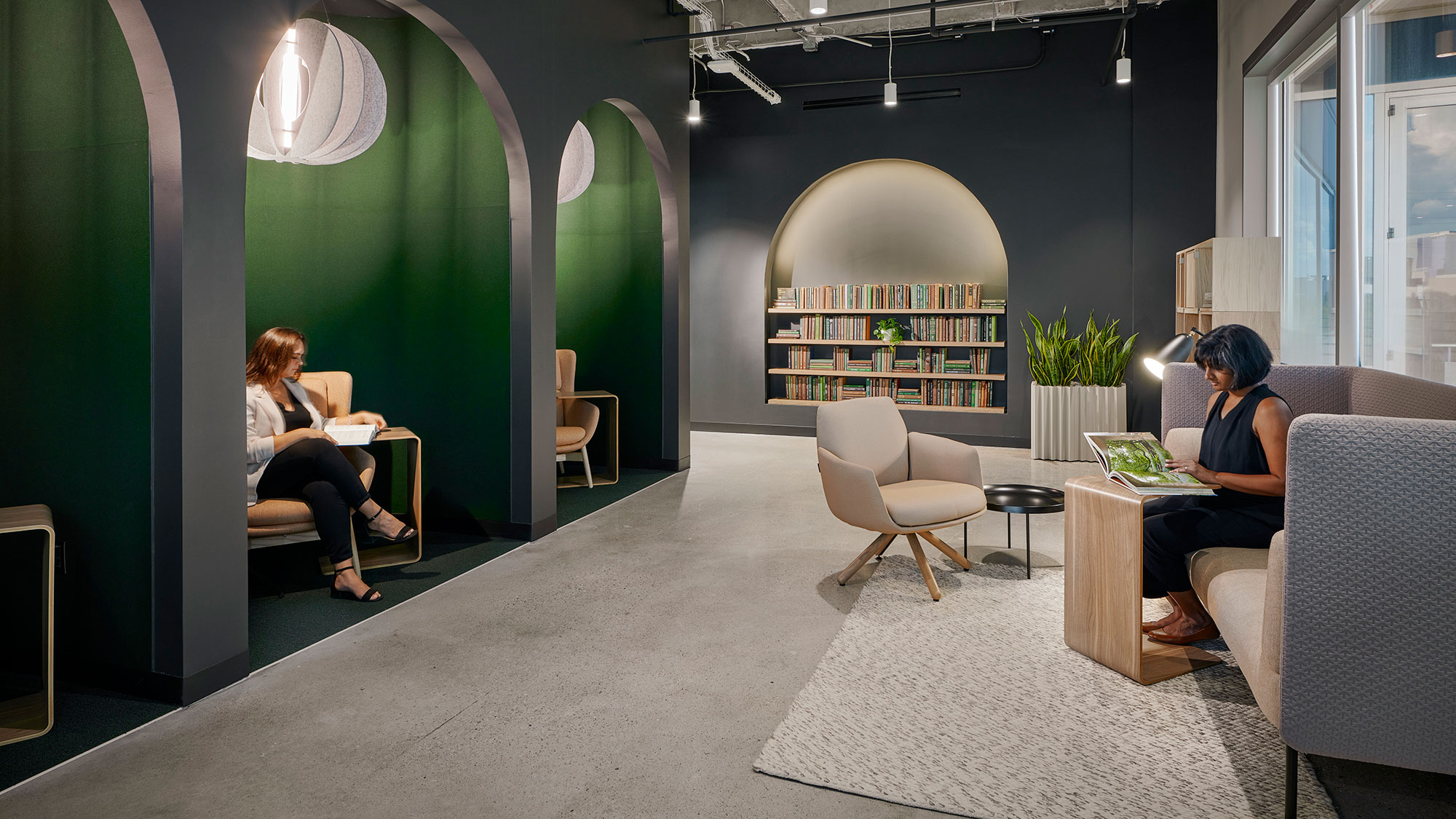
KM: Do you think these pilot spaces actually change people’s behaviors, in terms of coming into the office or better performance?
SS: Clearly, people’s productivity went up, and our overall attendance in this space was higher than it was in our non-renovated space. It felt warmer and more inviting, and it was just a cool new place to work. If you create the right space, make it available, and have all those elements that really reduce the friction, then you’re going to have more people show up.
KM: Has this experience changed how you approach projects?
SS: There’s a lot of work that goes into designing and building space, along with a lot of fear and risk. We’re committing millions of dollars to a space that is going to be used by hundreds or thousands of people every day for a decade or two. That’s a big risk to bet on. The pilot concept takes a lot of that fear and risk away. We have all this feedback now from people who are going to be occupying the space that we can apply to this much larger renovation, this much bigger bet, to ensure we get it right. Taking the fear and the risk out of the process was just spectacular.
KM: How has the pilot process impacted your real estate team and portfolio?
SS: The pilot truly helped us launch the future platform of NI’s space. It’s enabling us to create a playbook that’s scalable. We can hand it to future designers and future contractors, and it speeds the process up dramatically because we don't have to go through the whole design process from scratch. We’ve got specifications, branding, signage, and wayfinding. And once we define those specifications, then we can get into global contracts with furniture providers and other vendors. That also then speeds up the process because we get standard global pricing, and we know the exact specifications that we need. I’m excited about that particular element because it’s going to shave months off our process every single time, for every single office.
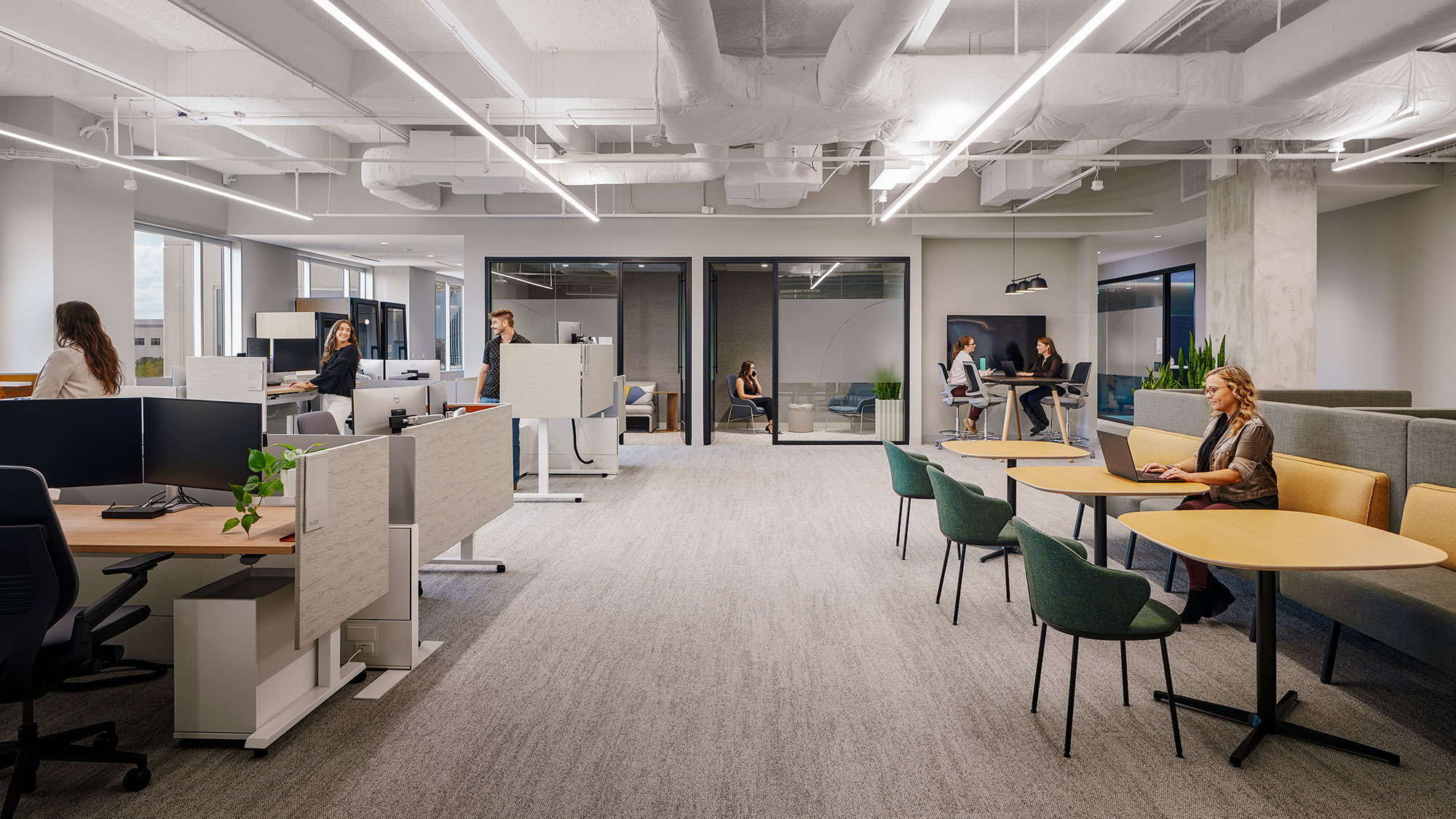
KM: What has been the feedback from leadership about the pilot?
SS: Our CEO loved that we were testing, measuring, and iterating because that was a very authentic process to NI. That’s exactly what we do when we develop products. The other feedback that I got was that this really went a long way to improve engagement and attendance in the office. It demonstrated that good, thoughtful design based on deep knowledge of who we are and how we work will organically deliver better engagement in the office.
We instinctively knew that people enjoy nice spaces, but with the pilot we were actually able to prove it; we’ve solved that through design. Nobody knows what’s going to happen with the return to office or the future of work. We’ve done something that has worked, and it has taken the fear and the risk out of the process.
KM: As you roll out your renovation on your current campus and other sites, will you continue to keep feedback channels open and continue to learn and modify based on what you hear, even though they’re not pilots?
SS: The playbook is going to really define the space types, the look-and-feel, and all the requirements. As we deliver space, I definitely want to continue the feedback, especially the QR codes, because it can happen in the moment and it’s very pointed and specific. The playbook is a living document. We will continue iterating and updating it.
Space is like fashion: it’s never over, it’s never done; it’s constant. It’s important to have these standards, but it’s also important for them to be able to evolve over time.
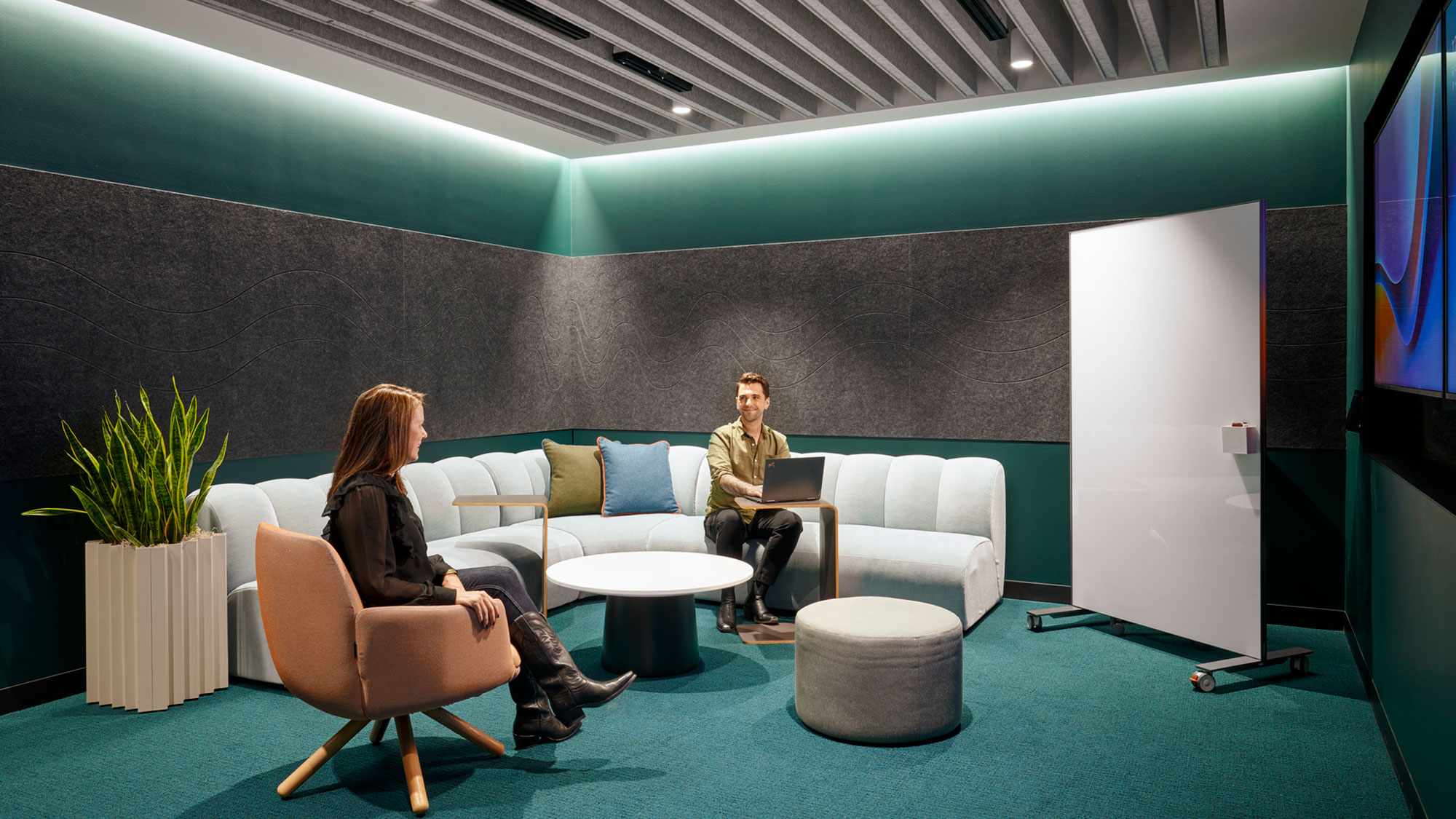
For media inquiries, email .
